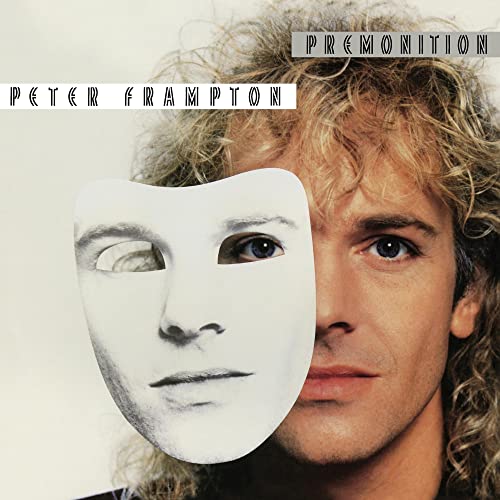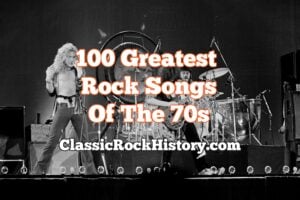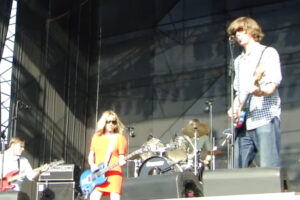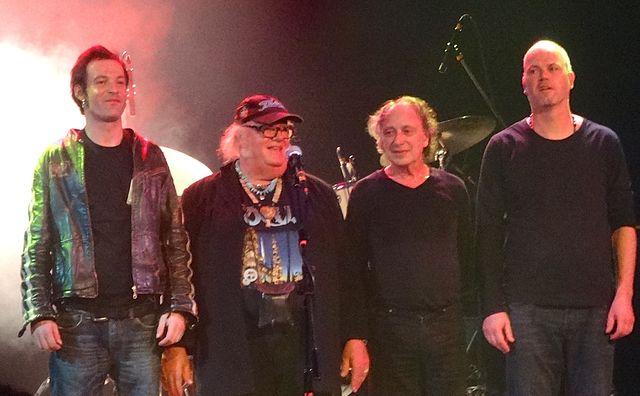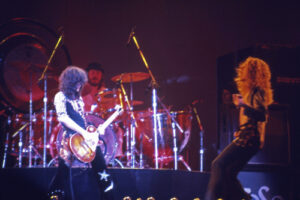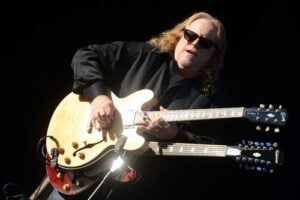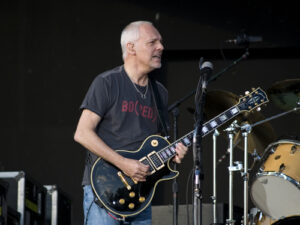
Feature Photo: Andrew-F.-Kazmierski-Shutterstock.com
Peter Frampton’s “Stop” is a soulful reflection on love’s complexities, blending his emotive guitar work with heartfelt lyrics. Bruce Springsteen’s “Does This Bus Stop at 82nd Street?” captures his early lyrical prowess, weaving vivid cityscapes with poetic storytelling. Stevie Nicks, alongside Tom Petty, brought timeless chemistry to “Stop Draggin’ My Heart Around,” a track that pulses with tension and raw emotion. The Stylistics’ “Stop, Look, Listen (To Your Heart)” exudes elegance, pairing their velvety harmonies with a message of self-awareness in love. Gino Vannelli’s “I Just Wanna Stop” is a masterclass in romantic balladry, driven by his soaring vocals and cinematic instrumentation.
The Rolling Stones bring unrelenting grit to their rendition of “Stop Breaking Down,” infusing Robert Johnson’s blues classic with their signature swagger. The Kinks’ “Stop Your Sobbing” marks an early showcase of Ray Davies’ knack for blending vulnerability with catchy melodies. The Hollies’ “Bus Stop” is a perfect pop gem, where a shared umbrella becomes the metaphor for a blossoming romance. Fleetwood Mac’s “Don’t Stop” channels optimism through Christine McVie’s lyrical charm, becoming an enduring anthem of hope. Diana Ross & The Supremes close this collection with “Stop! In the Name of Love,” a Motown classic that remains a defining example of emotional urgency and harmonic perfection. Let’s now dig deeper into these songs…….
# 10 – Stop – Peter Frampton
Peter Frampton’s “Stop,” the lead track from his 1986 album Premonition, is a vibrant plea wrapped in an irresistible mix of rock and pop sensibilities. The song finds Frampton revisiting his signature melodic craftsmanship while incorporating the polished production style of the 1980s. Produced by Peter Frampton and Peter Solley, the track was recorded at Townhouse Studios in London.
Read More: 10 Most Rocking Peter Frampton Songs
# 9 – Does This Bus Stop at 82nd Street? – Bruce Springsteen
Bruce Springsteen’s “Does This Bus Stop at 82nd Street?” from his 1973 debut album Greetings from Asbury Park, N.J. captures a kaleidoscopic vision of urban life through the eyes of a young storyteller. Recorded in 1972 at 914 Sound Studios in Blauvelt, New York, and produced by Mike Appel and Jim Cretecos.Musically, “Does This Bus Stop at 82nd Street?” is carried by Springsteen’s acoustic guitar and Vini Lopez’s driving percussion, underscoring its narrative urgency.
Read More: The Impact Of Springsteen’s Greetings from Asbury Park, N.J. Album
# 8 – Stop Draggin’ My Heart Around—Stevie Nicks
Few duets in rock history are as electrifying as Stevie Nicks’ “Stop Draggin’ My Heart Around,” a collaboration with Tom Petty and the Heartbreakers from her 1981 debut solo album Bella Donna. The track was recorded in 1981, produced by Jimmy Iovine, and features Nicks’ iconic vocals complemented by Petty’s gritty delivery. Notably, the Heartbreakers themselves played on the track, with standout contributions from guitarist Mike Campbell, whose riffs give the song its unforgettable edge. The synergy between Nicks and Petty exemplifies a blend of two unique artistic worlds that converge to create something both raw and hauntingly beautiful. “Stop Draggin’ My Heart Around” became a commercial success, peaking at number three on the Billboard Hot 100.
Read More: 10 Most Underrated Stevie Nicks Songs
# 7 – Stop, Look, Listen (To Your Heart) -The Stylistics
“Stop, Look, Listen (To Your Heart)” by The Stylistics captures the essence of romantic introspection with its smooth, tender delivery and timeless message. Released in 1971 as part of their self-titled debut album, The Stylistics, the song was written by the celebrated songwriting duo Thom Bell and Linda Creed. Produced by Thom Bell in the soulful musical haven of Philadelphia, the track features The Stylistics’ signature lush harmonies and falsetto-led vocals, brought to life by lead singer Russell Thompkins Jr. The delicate arrangement, supported by Bell’s orchestral production style, emphasizes both the vulnerability and strength of the lyrics, making this ballad a masterpiece of early 1970s soul music.
Read More: Top 10 Stylistics Songs
# 6 – I Just Wanna Stop – Gino Vannelli
Few songs encapsulate heartfelt longing and emotional vulnerability as beautifully as Gino Vannelli’s “I Just Wanna Stop.” Released in 1978 as part of his album Brother to Brother, this song became Vannelli’s signature hit, propelling him to international acclaim. Written by his brother, Ross Vannelli, the song was recorded at the A&M Studios in Hollywood, California, under the meticulous production of Gino, Joe Vannelli, and Geoff Emerick. Featuring a polished arrangement that melds soft rock with jazz-infused instrumentation, the track highlights Gino’s expressive vocals, supported by lush orchestration and Joe Vannelli’s intricate keyboard work. The song charted at number four on the Billboard Hot 100 and earning Gino Vannelli a Grammy nomination.
Read More: Top 10 Gino Vannelli Songs
# 5 – Stop Breaking Down – The Rolling Stones
The Rolling Stones’ rendition of “Stop Breaking Down” injects electric energy into a Delta blues classic, showcasing their ability to modernize traditional blues while maintaining its raw emotional power. Originally penned by blues legend Robert Johnson in 1937, the Stones’ version was recorded during sessions for their Exile on Main St. album, which took place between 1969 and 1972 in various locations, including Mick Jagger’s Nellcôte villa in France. Under the production of Jimmy Miller, the band transformed the acoustic simplicity of Johnson’s original into a gritty, electrified showcase for their signature sound.
Read More: Top 10 Rolling Stones Albums
# 4 – Stop Your Sobbing – The Kinks
The Kinks’ “Stop Your Sobbing” captures a bittersweet plea for emotional resilience, blending tender lyricism with a restrained yet powerful arrangement. Written by Ray Davies, this track debuted on the band’s 1964 self-titled album, The Kinks, produced by Shel Talmy. Recorded at Pye Studios in London, the song diverges from the aggressive sound often associated with early Kinks hits like “You Really Got Me,” opting instead for a softer and more reflective tone.
Read More: Dave Davies of The Kinks: The ClassicRockHistory.com Interview
# 3 – Bus Stop – The Hollies
“Bus Stop,” recorded by The Hollies in 1966, unfolds as a charming narrative of chance encounters transforming into lasting love, capturing the everyday magic of serendipity. Written by Graham Gouldman, the track was recorded at Abbey Road Studios under the production of Ron Richards. Featuring Allan Clarke’s lead vocals, Tony Hicks on guitar, Bobby Elliott on drums, Bernie Calvert on bass, and Graham Nash’s harmonizing voice, the song melds folk-inspired storytelling with the polished pop-rock sound The Hollies were known for during their mid-1960s peak. Critically, “Bus Stop” marked a pivotal point for The Hollies’ international acclaim, breaking into the U.S. Top 10 and peaking at number five on the Billboard Hot 100.
Read More: 10 Best Songs Of The Hollies
# 2 – Don’t Stop – Fleetwood Mac
Optimism and resilience are the driving forces behind Fleetwood Mac’s “Don’t Stop,” a track that encapsulates the cathartic spirit of the band’s seminal album, Rumours. Written by Christine McVie, the song was recorded in 1976 at the Record Plant in Sausalito, California, under the production of the band alongside Ken Caillat and Richard Dashut. Its lineup featured Lindsey Buckingham and Christine McVie sharing lead vocals, John McVie on bass, Mick Fleetwood on drums, and Buckingham’s distinctive guitar work weaving throughout the arrangement.
Read More: Top 10 Fleetwood Mac Songs Sung By Christine McVie
# 1 – Stop In The Name Of Love – Diana Ross & The Supremes
Concluding this list of songs featuring the word “Stop” is the timeless anthem of heartbreak and defiance, “Stop! In the Name of Love” by Diana Ross & The Supremes. Released in February 1965 as part of the Motown canon, this classic emerged from the famed Holland-Dozier-Holland songwriting team. Recorded at Hitsville U.S.A. in Detroit, the track features the unmistakable production brilliance of Brian Holland and Lamont Dozier, alongside the vocal magic of Diana Ross, Mary Wilson, and Florence Ballard. The Funk Brothers, Motown’s revered house band, provided the lush instrumental backdrop, blending rhythmic elegance with soulful urgency.
Read More: Top 10 Supremes Songs
Read More: Artists’ Interviews Directory At ClassicRockHistory.com
Read More: Classic Rock Bands List And Directory
Updated June 5, 2025

